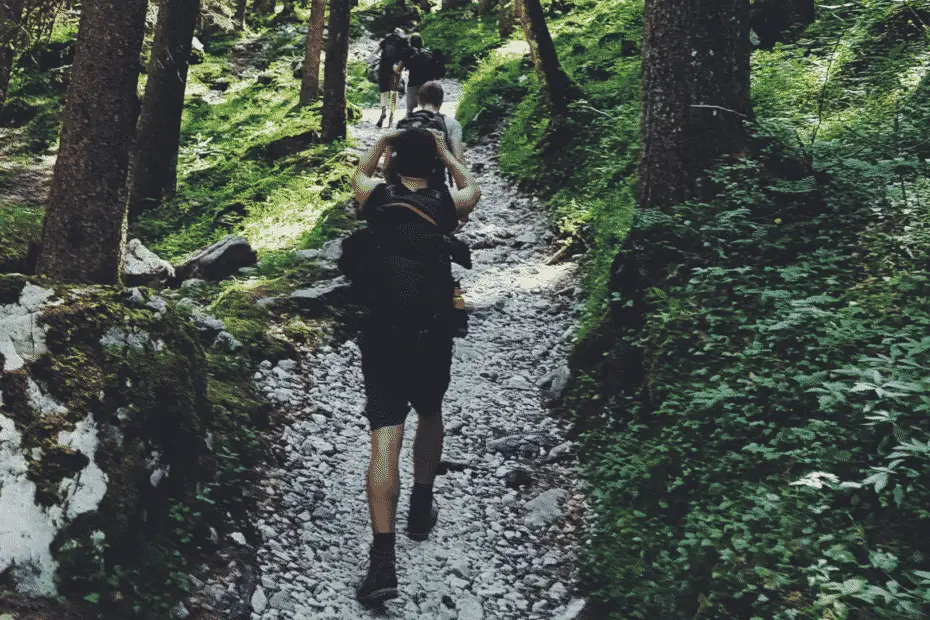Do you like the idea of hiking, but you can’t handle long distance hikes? You’re not alone! Many people are worried about getting into hiking, because they’re worried about how far they can hike. Don’t Worry! That just means you haven’t built up your hiking legs (aka trail legs) yet. So what are hikers or trail legs?
Hiking legs or trail legs refer to the muscles you build up through hard miles hiking down a trail. You can’t earn your hiking legs in the gym. It will take a month or two for your muscles, ligaments, and muscle fibers to build up enough strength to handle long miles on the trail.
Hiking isn’t like most other physical hobbies. You can lift weights and run drills to get better at football or baseball, but putting miles in is the only way to improve your hiking ability. Working out your legs at the gym isn’t a bad thing, but you need to build up your muscular endurance and stiffen up your feet before long distance hikes.
In the rest of this post I’ll explain how to build up your hikers legs so you can handle almost anything on the trail. I’ll go over toughening up your feet, building leg strength, and reducing the risk of blisters. It won’t take long for you to build up your mileage and pace on the trail.
Table Of Contents
What Are Hiker Legs or Trail Legs?
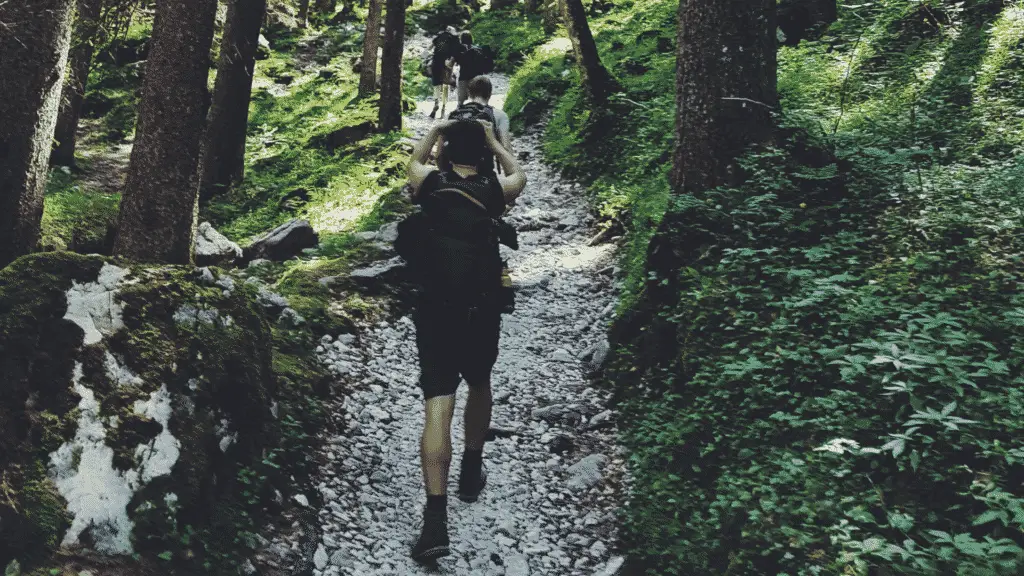
Have you ever heard of hikers talking about getting their trail legs or hiking legs? It didn’t take long to realize what that means after increasing my hiking mileage. My legs/feet were completely dead, and my feet were covered in blisters after my first long distance hike.
It doesn’t take long to develop your trail legs once you first start hiking. Most people can develop their hikers legs over the first couple of weeks on the trail. Unsurprisingly, this happens to be the same time frame where most hiking injuries occur on the trail.
The process of developing your hiking legs is known as neuromuscular adaptation. I’ll explain more in the following section, but neuromuscular adaptation is how your body deals with the added stress of hiking. It takes a while for your body to build muscle so it activates the nerve cells in your legs to get more strength out of the muscles it already has.
So you will be able to fully utilize the muscles in your legs to hike farther without getting sore. Being able to hike farther is both a good and bad thing. Not feeling sore is nice, but you don’t have the muscle fibers in place to protect your ligaments.
You need to be very careful over the first couple of months. Shin splints, planter fasciitis, runners knee, ITBS, and Achilles tendinitis are the most common injury that can occur, but there are a wide range of injuries that can occur.
Hiking Legs Can Be Explained By Neuromuscular Adaptation
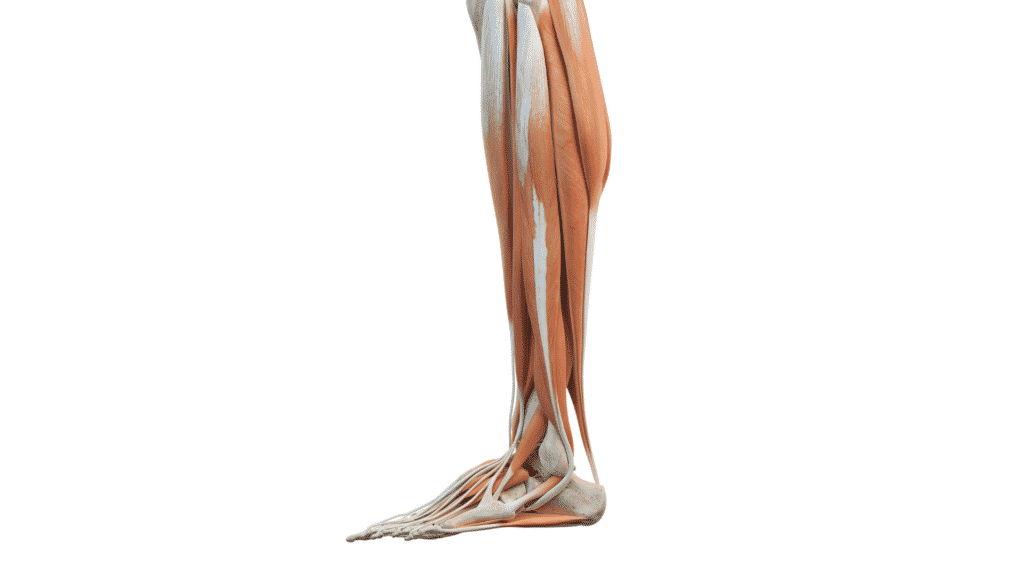
Developing your hiking legs is known in the scientific community as neuromuscular adaptation. When you hike everyday your body will try to maximize the muscle in your legs by un-muting the nerves. This is more commonly known as “beginner gains” among the fitness crowd.
Your body can’t build muscle fast enough to adapt to the added stress so it works on fully utilizing the muscle it already has. It will feel like your legs are much stronger, but it will take a while for your muscles to catch up. That sounds great in theory, but it can quickly lead to injury if you’re not careful.
It takes 4-8 weeks for your body to adjust to the added stress and start filling in gaps with additional muscle to meet your needs. Studies vary on the timeframe it takes to build muscle with some estimates putting the time frame closer to 12 weeks. It probably depends on the individual since there are lots of factors that go into muscle growth: age, nutrition, hormone levels, sleep, training history, and any other health condition.
Developing Your Trail Legs
Most people don’t use the muscles in their legs during their day job. The typical person sits on their butt at work 8 hours per day and spends a few more hours on the couch at night. Even a person that gets in 8,000-10,000 steps (4-5 miles) doesn’t do it all in one go.
There are lots of different muscles that you need to build before going on longer hikes. Some of those muscles can be built in the gym, but others need to be developed on the trail. A person that walks all day at work and is constantly going up/down stairs may be ready for a long distance hike, but most people need to take it easy at first.
As you hike, every muscle in your leg will get stronger. The long-dormant muscle fibers surrounding your ligaments will get stronger reducing your risk of injury. I mentioned this above, but it can take 2-4 months to develop the muscles needed to prevent injury so take it slow at first.
The amount of time it takes to get your hikers legs will be determined by a range of factors. Your age, fitness level, nutrition, sleep, and any other health related conditions play a role. It shouldn’t take longer than 2-3 weeks to feel comfortable on the trail, but it will take much longer to build enough muscle to prevent injury.
- When you first start hiking limit your mileage and only hike 2-3 days per week. Give yourself the weekend off and hike for a few hours every other day during the week. You will feel like you can go more frequently, but that increases your risk of injury.
- Slowly build up your hiking mileage over the first couple of months. Start with short 2-3 mile hikes on flat easy terrain and build up your mileage over time. After 2-3 weeks increase your mileage to 5+ miles and 8+ miles after 6-8 weeks.
- You can start hiking more frequently after the 6-8 week beginner phase. That’s when muscle starts to grow so you won’t need as much time to rest during the week. Fill in the gaps during your off days and alternate short and long hikes.
- Throw in elevation hikes so you don’t neglect that part of your body. Hiking uphill/downhill uses different muscles than when you’re travelling on flat terrain.
- Slowly increase your hiking mileage during the week until you’ve reached your mileage goals.
- Feel free to increase your pace as you progress or continue at a comfortable pace. Hiking is a solo activity so don’t feel like you need to compete with anybody.
Hiking Legs Are Earned On The Trail
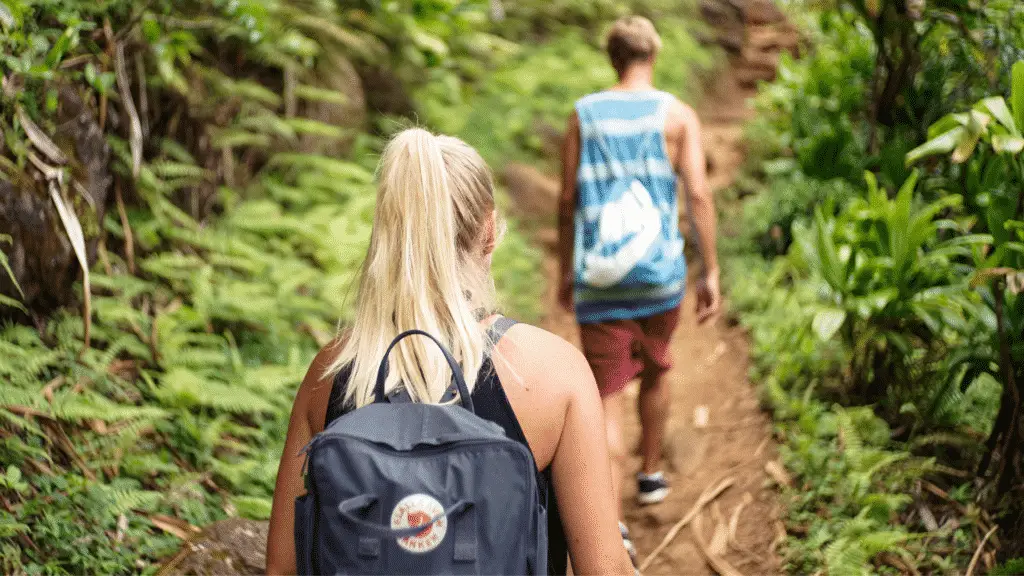
You always see guys focusing on their upper body at the gym. They work their arms, chest, and back, but completely neglect their legs. It doesn’t take long for their body to look unbalanced and have underdeveloped legs compared to the rest of their body.
Seasoned hikers fall into the complete opposite side of the spectrum. As your body adjust to long distance hiking you earn your hiking legs (aka trail legs). They end up with strong quads, hamstrings, calves and tough feet with a small upper body. It doesn’t take long for you to build up the leg strength to handle long miles on the trail.
It doesn’t matter how much you workout, your legs won’t be able to handle the miles hikers put on the trail. Using a treadmill or stair climber will help, but the only way to build up your hiking legs is to get your miles in on the trail. I guess you could hike on a treadmill 5 hours per day, but that would be crazy.
Buildup your hiking legs is fairly straightforward. All you need to do is go on hikes, slowly building up your pace and mileage. After a month or two you’ll have your hiking legs and be able to handle anything the trail throws at you. Just keep an eye out for shin splints and blisters, because they can wreak havoc on beginners.
Try Not To Overdo Your Hikes As A Beginner
When I first started hiking and backpacking, the thought of going on a 15 mile hike seemed crazy. I was in decent shape, but my legs were dead after 8 miles (less on hilly terrain). My feet would be sore and covered in blisters, and my calves would be cramping like crazy.
After hiking after work for a month or two those 8 mile hikes seemed like nothing and I’d go on 12-15 mile hikes on the weekends. The muscles in my legs were stronger and my feet were toughened up. I decided to plan my first long distance backpacking trip, which was a huge mistake.
There’s a big difference between hiking 15 miles one day a week and doing that 7 days in a row. My feet were blistered on the 3rd day and I still had more than 60 miles to go. I learned a lot on that trip and thankfully that hasn’t happened since, but it really put me out of the hiking mood. It was a horrible experience that led to me giving up hiking for a while.
As time went on the memory of that terrible backpacking trip didn’t seem so bad. I started hiking again after a few months and learned my lesson. Plan your hike around your body and try not to overdo it at first. Start slow and build up your muscles over time.
Don’t overdo it! That can lead to a terrible time and potentially get you injured. Build up your hiking legs over 2-3 months and by that time you’ll be ready for longer hikes.
Most Injuries Occur During The First Month Hiking
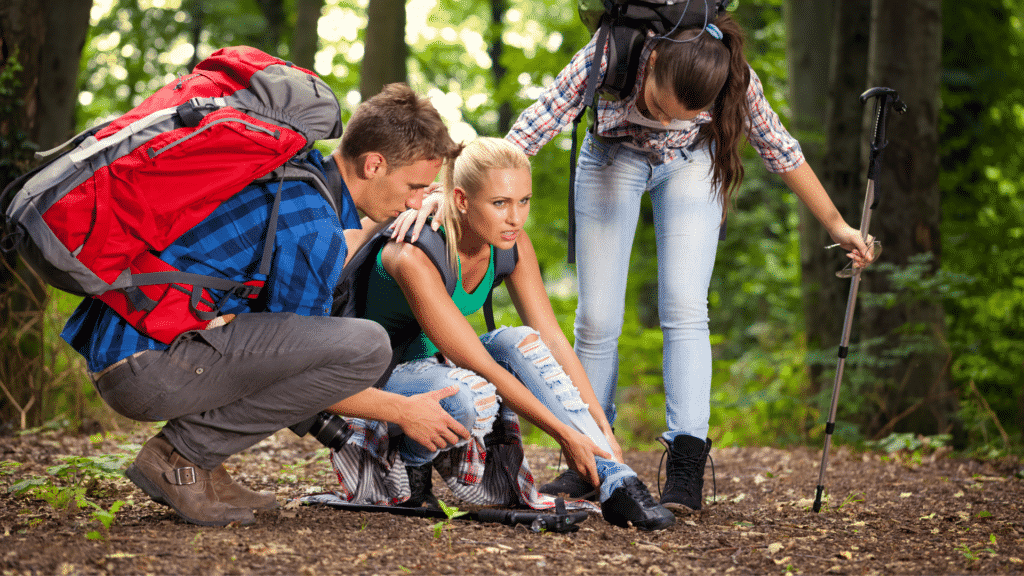
The vast majority of hiking injuries will occur over the first month on the trail. This can be explained by neuromuscular adaptation (explained above). Your trail legs have developed so you don’t get sore, but you don’t have the muscles required to prevent injury.
Make sure you get a lot of rest between hikes and take things slow. You’ve come a long way, but you’re not ready for long distance hikes just yet. It will probably feel like you’re ready, but give it a few more weeks before increasing mileage and reducing your time off.
This is phase where most people start developing overuse injuries. Shin splints, planter fasciitis, runners knee, ITBS, and Achilles tendinitis are extremely common, but there are a wide range of injuries that can occur. Some of these injuries will heal on their own by following the R.I.C.E method (rest, ice, compression, elevation), but you don’t want to overdo it.
Here are a few of other common injuries that can occur when you first start hiking.
Blisters and Chaffing
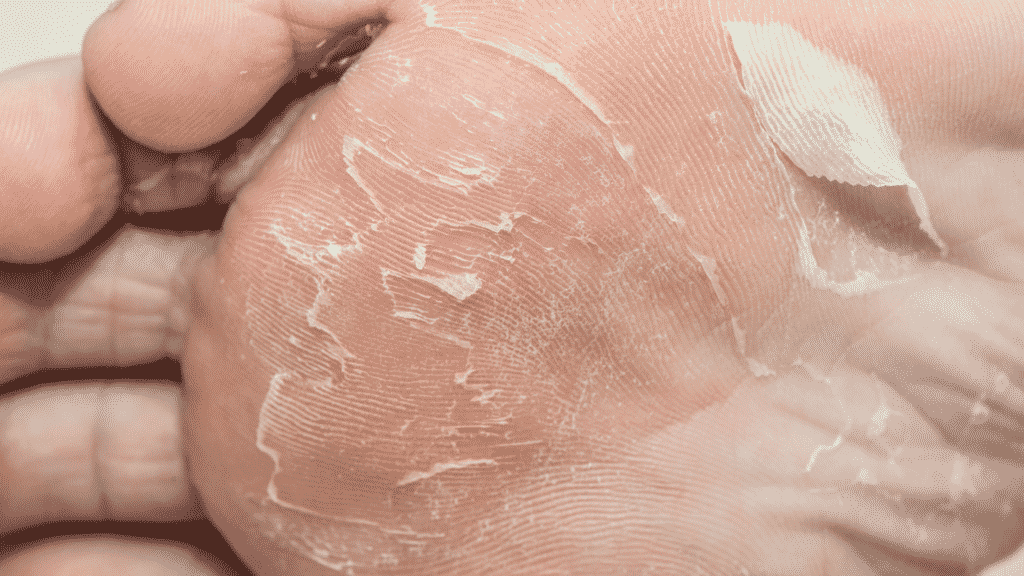
Blisters and chafing are by far the most common injuries that will occur when you first start hiking. It’s caused by friction as your skin continuously rubs throughout a hike. You can reduce the risk of blisters and chafing by wearing moisture-wicking fabrics to cut down sweat.
Merino wool socks (my favorite) and underwear (my favorite) should be your first step towards eliminating blisters and chafing. Wool dries fast and can absorb up to 35% of it’s weight in water without feeling wet. So you can sweat without worrying about excessive rubbing.
If that doesn’t work, you will need to use some kind of anti-friction cream. Desitin is probably the best cream for preventing/curing blisters and chafing, but it’s messy leaving a white stain on everything. HikeGoo and Bodyglide are a much cleaner option.
Exhaustion

At the end of a long day hike you will be completely exhausted. You’re carrying a heavy pack and burn through a crazy amount of calories. This will last for weeks until your body gets used to the added stress.
Make sure you get enough water and extra calories in so you have the fuel you’ll need during your hike. Get a good nights rest once you’re done and give your muscles time to heal. Listen to your body and try not to overdo the physical exercise.
Achy Muscles and Sore Feet
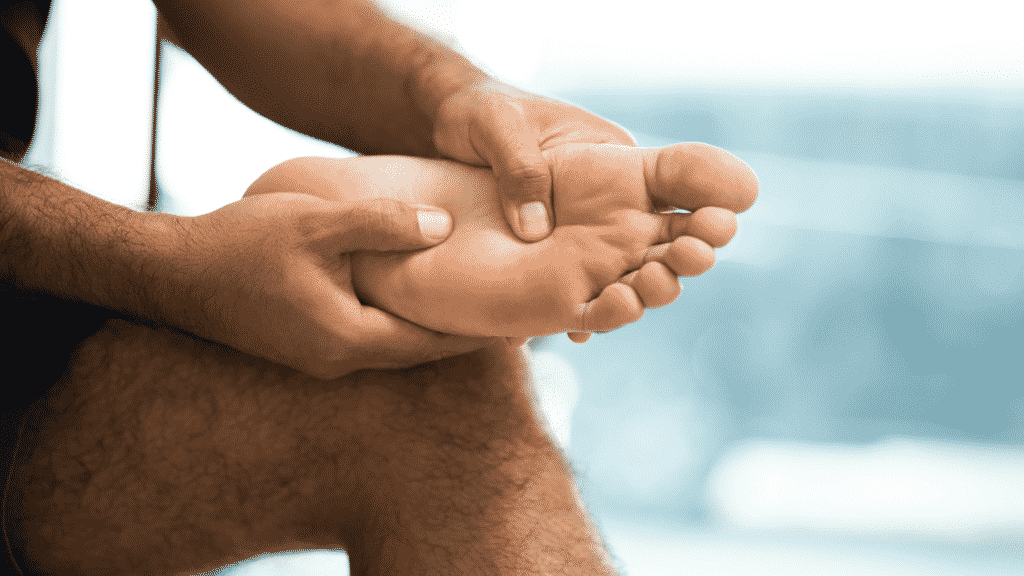
Your body isn’t used to hiking long distances so aches and pains are extremely common. It’s common for your calves and feet to be sore after a long hike.
Most muscle aches will go away after a day or two, but don’t ignore persistent pain. You can usually tell the difference between a dull muscle ache and serious injury, but ignoring your body can lead to overuse injuries.
